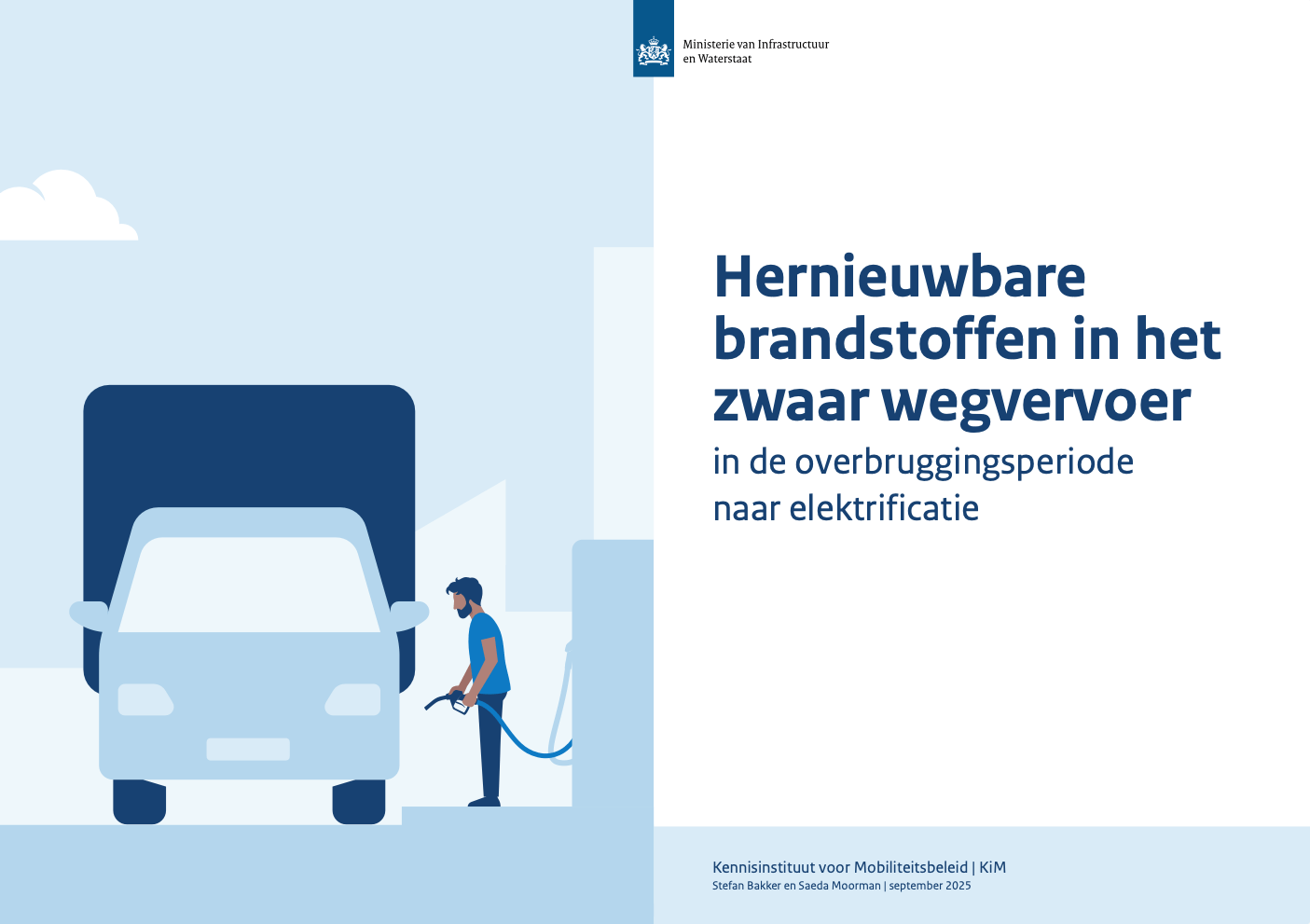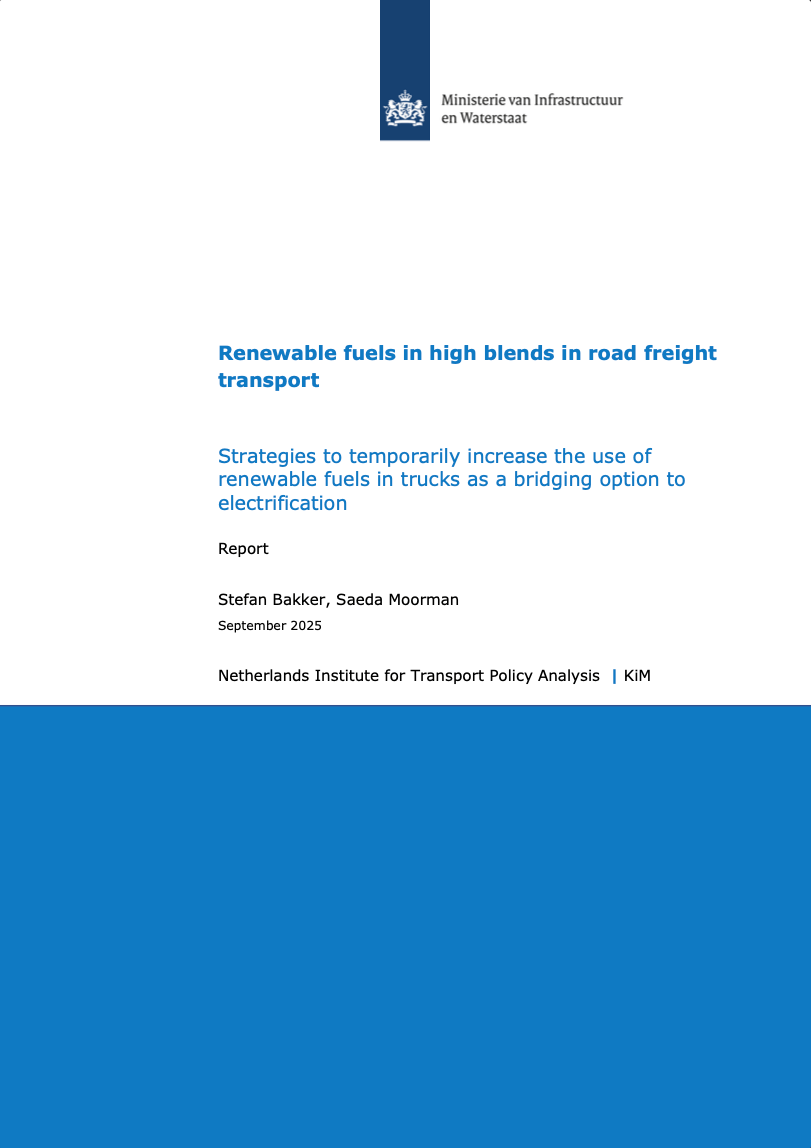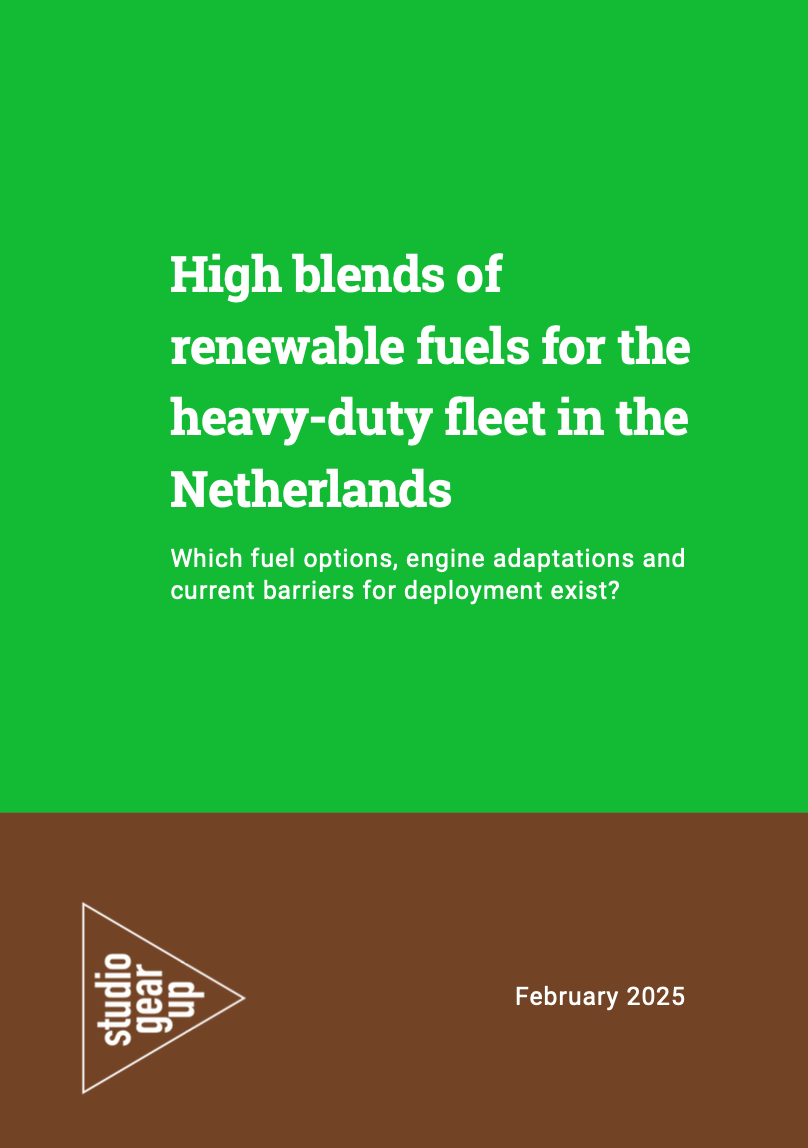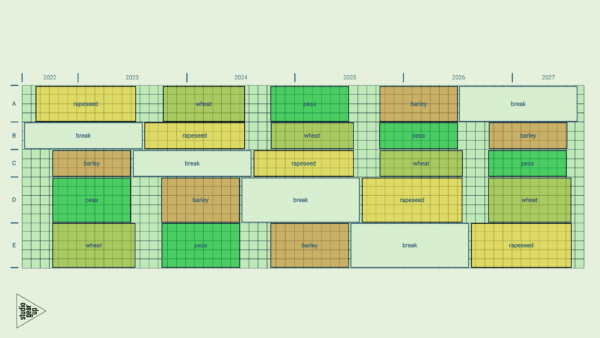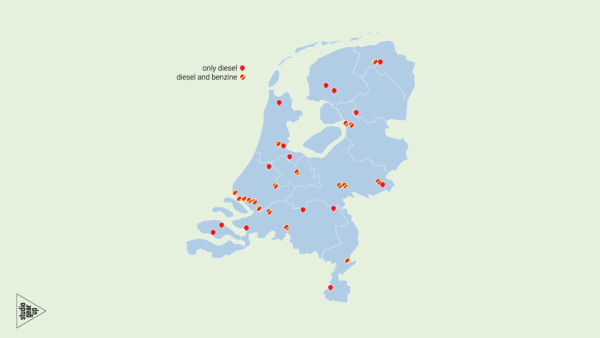For: KiM Netherlands Institute for Transport Policy Analysis (Kennisinstituurt voor Mobiliteitsbeleid
[September 2024 – February 2025]
Project description
KiM Netherlands Institute for Transport Policy Analysis (Kennisinstituut voor Mobiliteit – KiM) commissioned studio Gear Up to conduct research to explore the options for high-blends of renewable fuels in the heavy-duty fleet. This research served as input for KiM’s (2025) report: Renewable fuels in high blends in road freight transport , which provides recommendations for Dutch policy makers aiming to shape climate action in the road sector. The study sets out to explore alternative fuel options available to heavy-duty vehicles given that there is “uncertainty about the pace of truck electrification”.
Scope of the study
The study by studio Gear Up, explores options for high blends of renewable fuels specifically in the heavy-duty fleet in the Netherlands. The study assessed different combinations of renewable fuels and engines which could permit the use of higher blends during the period from 2030 to 2040. Exploring both the available “drop-in” options, as well as identifying options which require adaptions to the engine or fuelling system and entirely new types of vehicles which may be introduced in the coming years. The main barriers to achieving high blends of renewable fuels are reviewed and a set of recommendations are provided.
Download the studio Gear Up report here.
Main findings
Several renewable fuels are identified as possible options for heavy-duty vehicles at both full and high-blend-levels (depending on the fuel/engine combination).
- Increasing the share of renewable fuels should target options compatible with diesel engines which comprise a large share in the Dutch fleet.
- FAME biodiesel can be blended with fossil diesel and used at blend levels up to 100% in the existing fleet with limited adaption.
- Other renewable fuels such as paraffinic diesel fuels (in the form of Hydrotreated Vegetable Oil or Anything-To-Liquid corresponding to the XTL fuel label), HPO and OMEx are identified as possible drop-in options, without adaptation to existing diesel engines.
- It is also possible to convert existing compression-ignition engines to a dual fuel set-up to allow the application of other renewable fuel types, such as: methane, DME, methanol, ethanol, hydrogen, or ammonia. Though, those do require new distribution and storage infrastructures.
- For certain fuel types, such as for renewable methanol and renewable hydrogen, new vehicles could be introduced in the coming years.
Adaptation of existing internal combustion engines for high fuel blends comes with (non-technical) challenges.
- A main barrier to the adaptation of engines in existing vehicles is related to the fact that the vehicle owner would lose the manufacturer’s warranty, along with the need for recertification thereafter and possible increase in maintenance intervals.
- Addressing this above issue requires action from stakeholders, likely including the government, such as spreading the risks, providing alternative guarantees, and group recertification programs for adapted vehicles.
The successful deployment of fuel/engine combinations depends on the availability of renewable fuels.
- The combination of potentially a brief market window between 2030 and 2040 and strict requirements on feedstocks and technologies, inhibits investments in expanding renewable fuel production capacity.
- Investors require both market and policy certainty: if investments in renewable fuel production does not take-off in Europe in the coming years, then future EU demand for renewable fuels may largely depend on imports and overseas investments.
- We recommend supporting the production and scale up of drop-in renewable fuels. For instance, de-risking investments by considering that renewable fuel pathways can produce multiple products for multiple sectors.
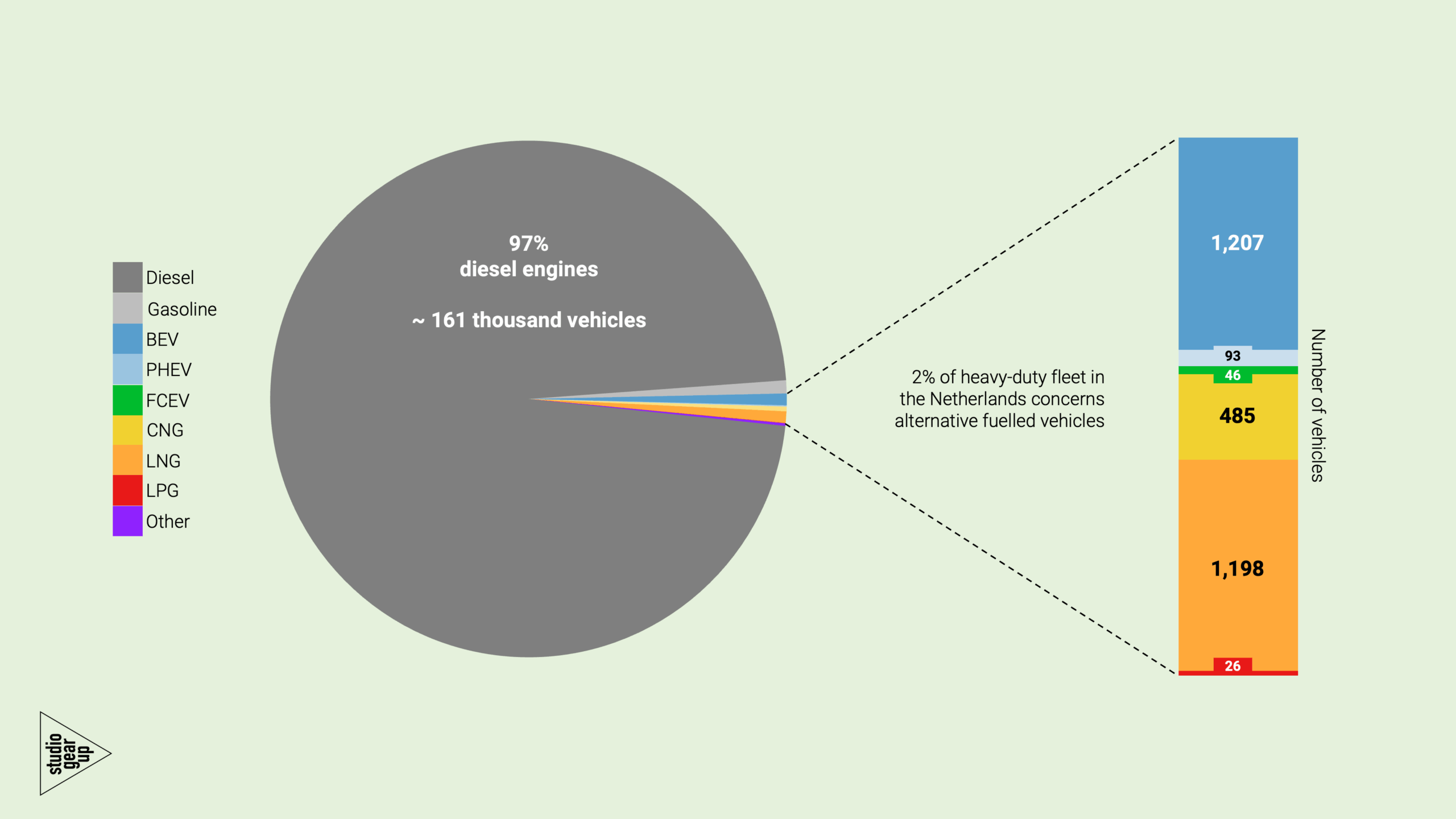
Figure 1. Number of heavy-duty vehicles registered in the Netherlands in 2024, split out to drivetrains. Data for total, BEV, FCEV and PHEV vehicles in December 2024 from RVO: N2 and N3 vehicles, but only the heavy-duty variations [RVO, 31 December 2024, sustainable mobility database]. Data for LPG, CNG and LNG trucks based on the share of alternative fuelled heavy-duty vehicles in the Netherlands [European Commission, 2024 data, European Alternative Fuels Observatory for the share of alternative fuelled heavy-duty vehicles in the Netherland ] based on national registration
KiM report
The English version of the KiM report can be found here, or click on the image below.
The Netherlands version of the report, plus a brochure on renewable fuels in heavy duty transport can be downloaded via this link.
Report by studio Gear Up
The report by studio Gear Up is an annex report to the KiM Report. The report can be found here , or click on the image below.

